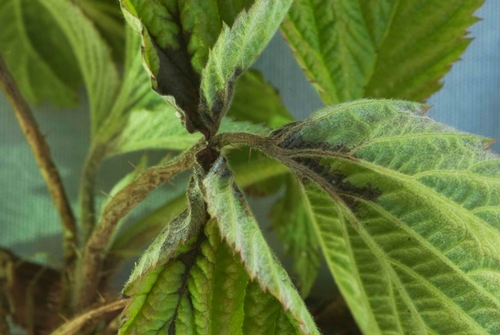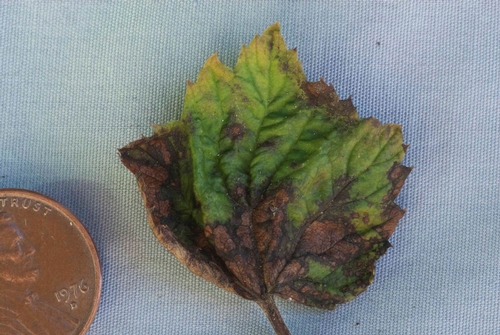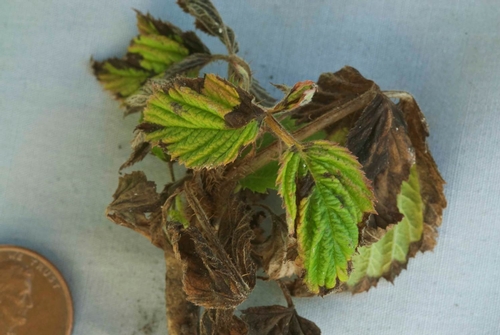In the winter (February) of 2013, a field of raspberries in Watsonville was discovered to be infected with Pseudomonas syringae, the causal agent of Pseudomonas blight disease. This was the first documentation of this disease on raspberry in our region.
As pictured below, the infection of raspberry plants is manifested by brown, angular-shaped, water-soaked spots on the developing leaves, petioles and emerging plants. The grower reported a sort of “sweating” of the infected plants early in the morning, which could be due to leakage from tissues broken by bacterial activities. Many of the smaller, emerging plants had died back, but thanks to the carbohydrate reserves in the crowns and roots, they grew back and recovered once the weather warmed up. Outside of the great delay in growth, the field bore fruit normally.
As is the case for most bacterial problems, once the weather becomes warm and dry, this bacterium becomes less active in raspberry and disease normally subsides. This field indeed improved with the warming and drying weather over subsequent weeks. However, it would be interesting to see if the disease again would develop in the fall with the return of cooler and wetter conditions and the presence of wounds created in the foliage from insects, wind, or cultural practices. Pseudomonas syringae survives the winter in the plant buds and also lives as an epiphyte (growing on the surface of the plant but not invading it).
Chemical control should be used with caution, since many of the chemicals recommended for treatment could also damage the plants, especially the delicate, early season foliage. However, if this disease is a significant problem, it is strongly recommended that the grower apply either a fixed copper or Bordeaux mixture to canes after harvest but before the fall rains. Such applications can reduce the bacterial inoculum on the canes and buds. We will be monitoring caneberry plantings for Pseudomonas blight so as to determine whether this will be an on-going disease concern for the industry.
As of the date of this blog (spring 2014), Pseudomonas blight has not yet been observed and reported for this current season on caneberry in our coastal region. If you see suspect symptoms, submit samples to our Cooperative Extension office for laboratory testing and confirmation.
Attached Images:


